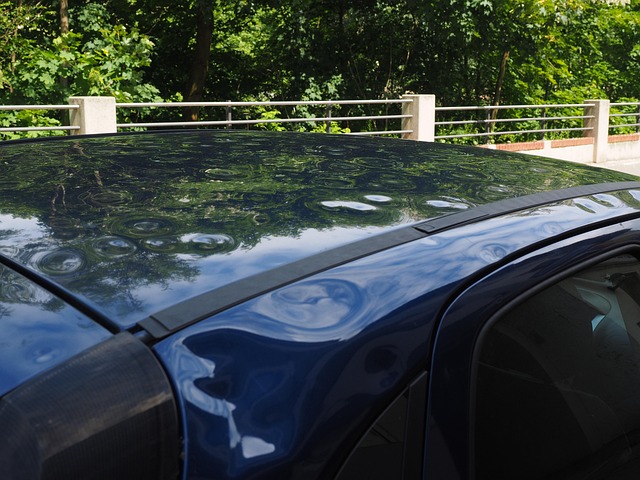Verify Eco-Friendly Repairs: A Step-by-Step Guide
Auto repair shops committing to environmentally safe repair through eco-friendly materials and techn…….
Welcome to an in-depth exploration of a revolutionary concept transforming the way we approach maintenance and restoration—Environmentally Safe Repair (ESR). This comprehensive guide aims to equip readers with a thorough understanding of ESR, its impact, and its role in shaping a sustainable future. By delving into various facets, from global adoption to technological innovations, we will uncover why ESR is not just a trend but an essential practice for the modern world.
Environmentally Safe Repair refers to a set of practices aimed at restoring or maintaining structures, infrastructure, and natural environments with minimal ecological harm. It emphasizes using eco-friendly materials, methods, and technologies that preserve biodiversity, reduce pollution, and mitigate climate change impacts. The core components include:
The concept of ESR has evolved over the past few decades as environmental consciousness has grown globally. Initially, traditional repair methods focused on quick fixes without considering long-term ecological impacts. However, increasing public awareness and stricter environmental regulations have driven the need for more sustainable approaches. Key milestones include:
ESR is significant for several reasons:
Environmentally Safe Repair has gained traction worldwide, with countries embracing sustainable practices at varying rates:
| Region | Adoption Rate | Key Drivers | Challenges |
|---|---|---|---|
| North America | High | Stricter environmental regulations, advanced technological infrastructure | Cost concerns, resistance to change |
| Europe | Very High | Stringent EU environmental policies, strong green building culture | Regional disparities in implementation |
| Asia Pacific | Growing | Increasing urbanization, government incentives for sustainability | Lack of standardized guidelines, limited awareness |
| Middle East & Africa | Moderate-High | Growing focus on sustainable cities, regional climate change concerns | Limited access to eco-friendly materials, technical expertise |
Several global trends are driving the evolution of ESR:
The ESR market is experiencing significant growth due to:
ESR offers substantial economic advantages:
Technological breakthroughs have revolutionized ESR:
Technological advancements have transformed traditional repair methods:
Future technologies will further enhance ESR:
Government policies play a pivotal role in promoting ESR:
Regional regulatory frameworks vary but generally:
Despite its numerous benefits, ESR faces several challenges:
Criticisms of ESR include:
Challenge: Renovate a historic city center while preserving cultural heritage and reducing environmental impact.
Solution: The City X project involved the restoration of old buildings using locally sourced, low-VOC materials. Renewable energy systems were integrated, and green roofs enhanced biodiversity. Smart sensors monitored indoor air quality and energy usage.
Results: The project reduced carbon emissions by 30%, preserved cultural heritage, and created a vibrant, eco-friendly urban space. It received international recognition for its innovative ESR approach.
Objective: Repair a critically damaged bridge while minimizing disruption to local ecosystems.
Methodology: The repair team utilized advanced composite materials and precision engineering techniques. They implemented real-time monitoring of water quality during construction. Native plant species were used for revetment, promoting biodiversity.
Achievements: The project was completed ahead of schedule with minimal ecological disturbance. Water quality improved post-repair, and the bridge now supports increased traffic without compromising sustainability.
Task: Expand airport terminals while adhering to strict environmental regulations.
Strategy: The airport adopted a modular construction approach, using prefabricated eco-friendly modules. Renewable energy sources powered the new facilities, and rainwater harvesting systems were implemented. Native landscaping enhanced the natural environment.
Outcomes: The expansion reduced the carbon footprint of the airport by 40%, set a new benchmark for sustainable airport design globally, and won numerous environmental awards.
The future of ESR is promising, with several emerging trends:
Future growth areas include:
To capitalize on future prospects, stakeholders should:
Environmentally Safe Repair is not just a trend; it represents a necessary evolution in how we approach construction, maintenance, and restoration. By embracing ESR, we can protect our planet’s precious resources, combat climate change, and create sustainable communities. This comprehensive guide highlights the global impact, technological advancements, policy frameworks, and practical applications that drive the ESR movement. As we look to the future, continued innovation, collaboration, and advocacy will be crucial in realizing the full potential of ESR, ensuring a healthier planet for generations to come.
Q: How does ESR differ from traditional repair methods?
A: Traditional repair often prioritizes quick fixes with little regard for long-term environmental consequences. ESR, on the other hand, focuses on eco-friendly materials, energy efficiency, waste reduction, and biodiversity preservation throughout the entire repair process.
Q: What are some cost-effective ESR practices?
A: Cost-effectiveness in ESR depends on project specifics. Using locally sourced materials, recycling existing structures, and implementing energy-efficient solutions can reduce costs significantly. Governments often provide incentives to encourage these practices.
Q: Can you explain the role of technology in modern ESR?
A: Technology plays a pivotal role in ESR by enabling precision engineering, real-time monitoring, and efficient resource use. Digital tools, advanced materials, and renewable energy integration are transforming repair processes globally.
Q: How do policy regulations support ESR?
A: Governments support ESR through environmental protection laws, green building codes, incentives, and emissions standards. These policies provide guidelines, encourage certification, and ensure industries meet sustainability benchmarks.
Q: What are some common challenges faced during ESR projects?
A: Challenges include cost concerns, lack of standardized guidelines, technical expertise, supply chain issues, and public awareness. However, actionable strategies exist to overcome these obstacles, ensuring successful ESR implementations.

Auto repair shops committing to environmentally safe repair through eco-friendly materials and techn…….

Transparency in sustainable practices is crucial for building consumer trust in environmentally safe…….

Selecting eco-friendly materials like recycled metal sheets for frame repairs and bio-based composit…….

The automotive industry is transitioning towards environmentally safe repair practices to address es…….

The collision repair industry faces a crucial transition towards environmentally safe repair solutio…….

Adopting environmentally safe repair practices extends vehicle lifespans, minimizes toxic emissions,…….

The layout of a workshop significantly impacts environmental safety in automotive repairs, promoting…….